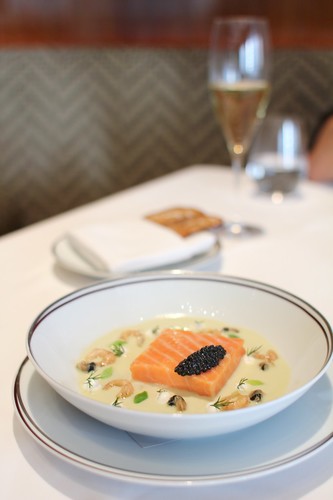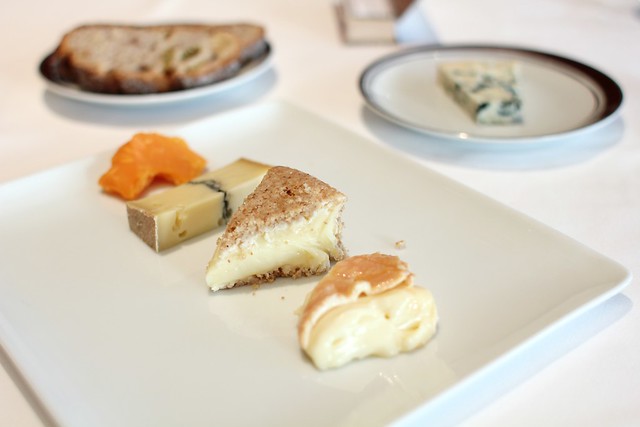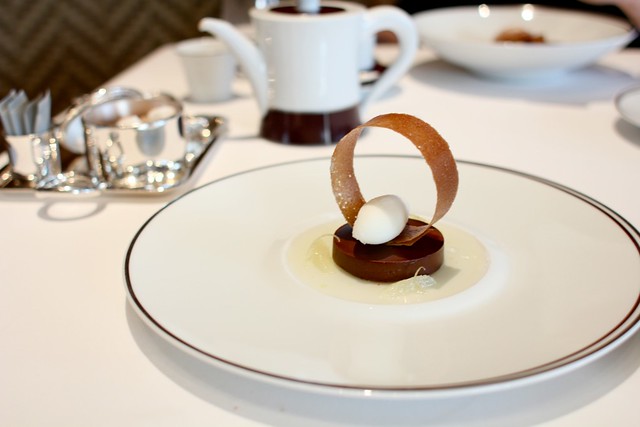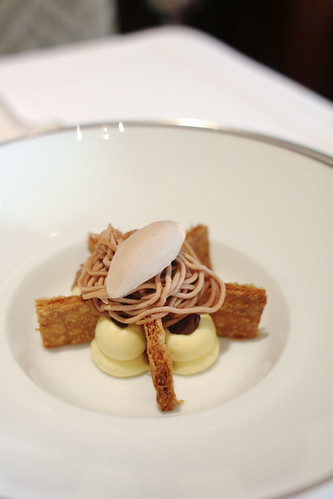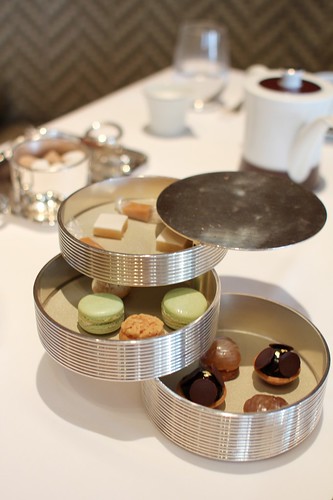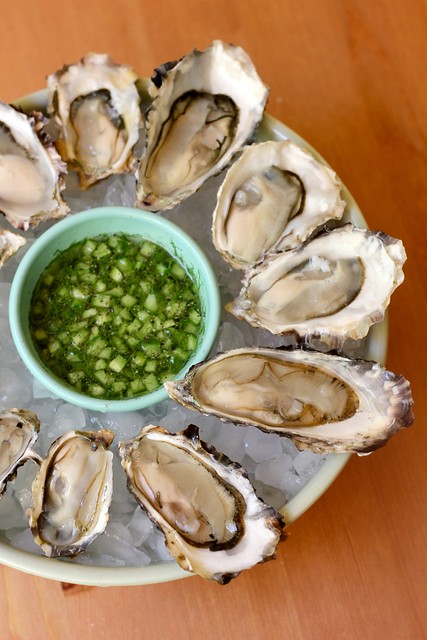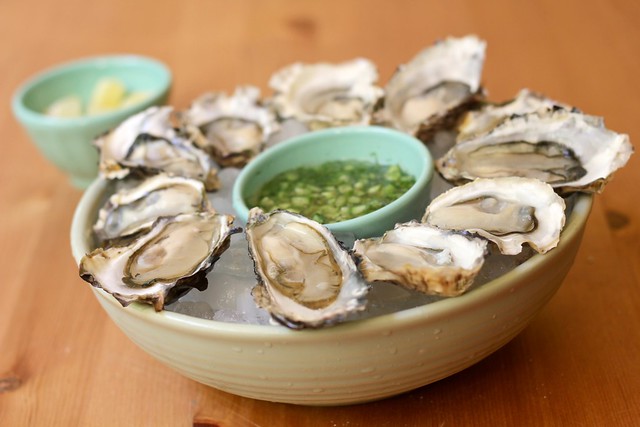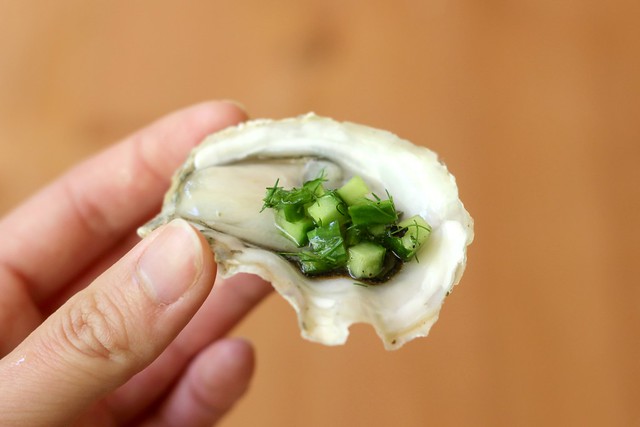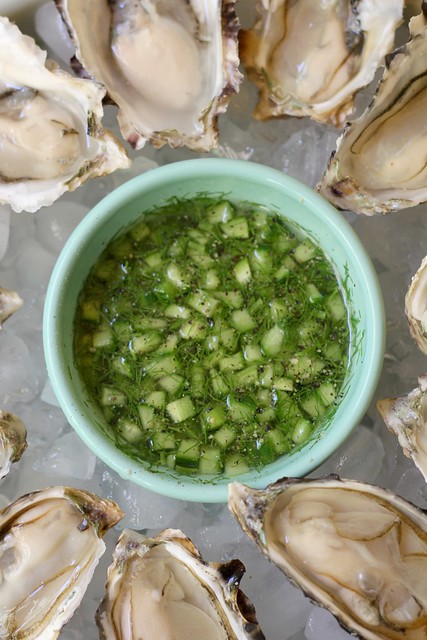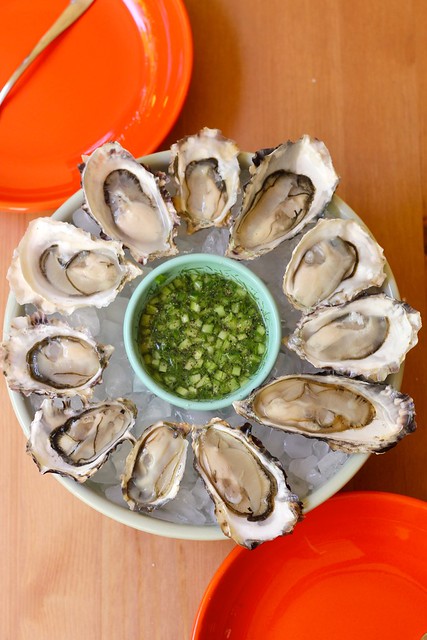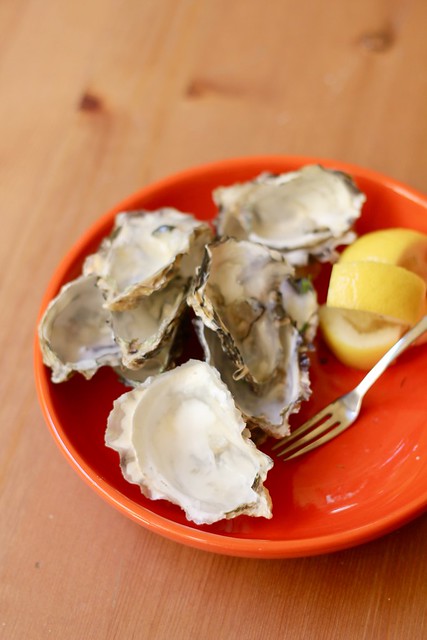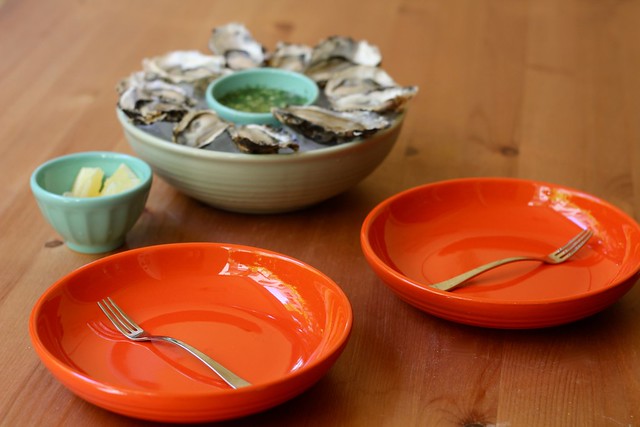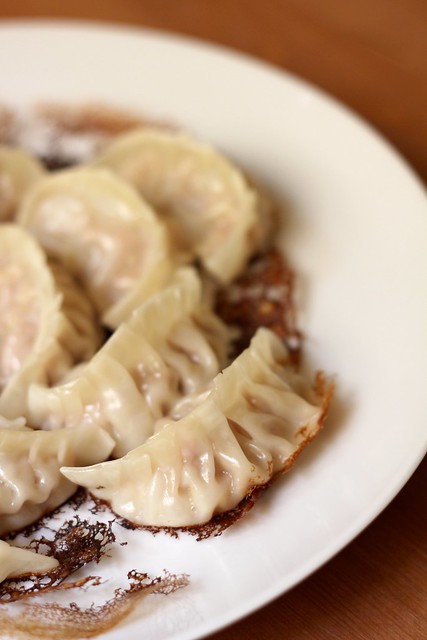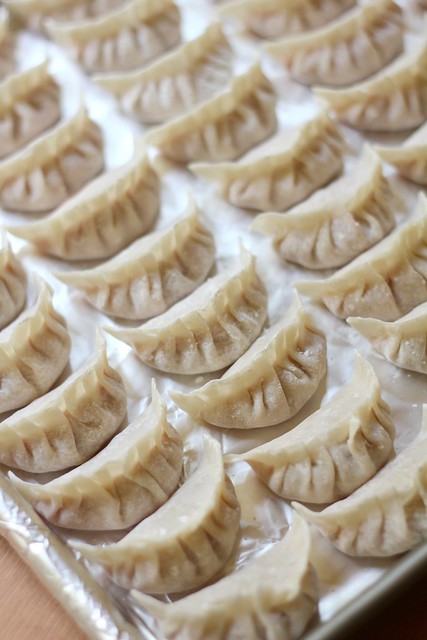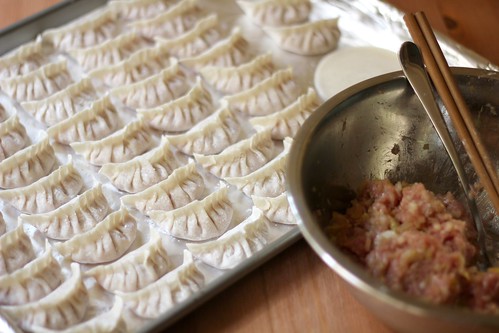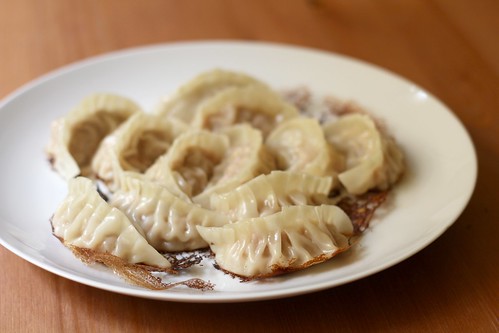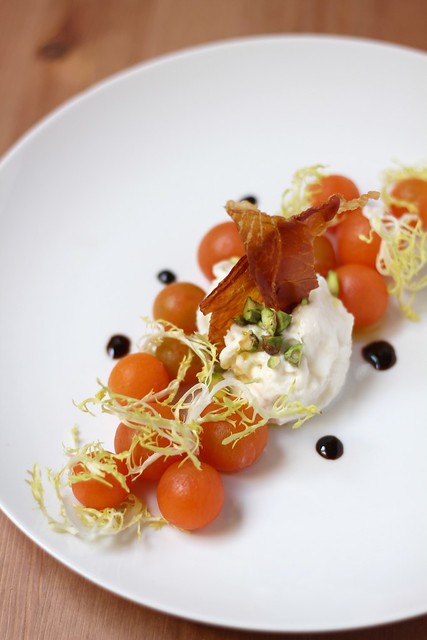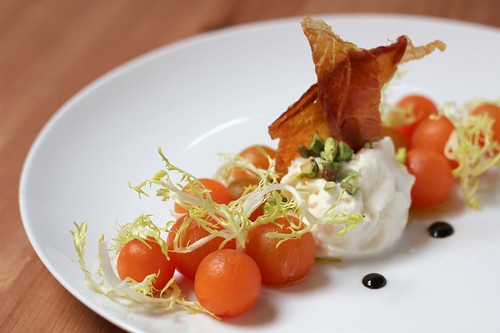It's been a while since I've blogged. I've thought about it a lot, I've taken a lot of pictures and eaten a lot of food, but somehow it was never enough to get me to upload the pictures, edit them, and then wax poetic about a meal on here. Firstly, I blame Instagram. It's just too easy to post pictures on there, and all I need is my iPhone, not my DSLR. To me, pictures are the most important part of food blogs anyways (I use most as a photographic restaurant menu, is that okay?) and Instagram provides more than enough food pictures. Secondly, it seems as though all the meals I've had are either unimpressive or too complicated for me to want to write about it.
Then I had a meal that was so pretty and so tasty I had to share. I'm not gonna write much--if you want a background on the history of the restaurant and the chef, I'm sure you can google it and find that information somewhere else. I just want to share the beauty of the meal, the essence of my experience and how I felt while I ate there.
at The Landmark Mandarin Oriental, Hong Kong
7F, 15 Queen's Road Central
tel: +852 2132 0066
dining date: January 29, 2013
**Michelin stars, 44th best restaurant in the world
First impressions count and that glorious ceiling left me breathless. The second I turned into the dining room, I saw this impressive ceiling sculpture. The rods, protruding in varying lengths from the high ceiling, were arranged in a flowing fashion that added movement to the majestic dining room. Though I will admit, looking up and seeing the ends of thousands of bronze rods hanging right above my head was a touch unsettling. Regardless, it really is quite stunning.
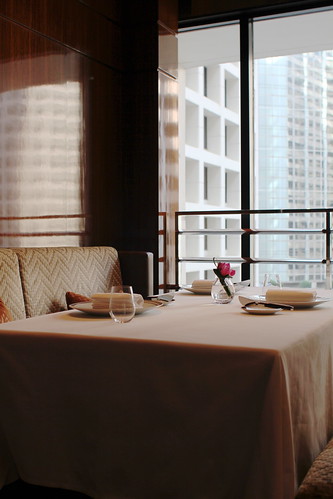
 The second most impressive aspect of my meal at Amber was the service. It's the tablecloth-ironed-stemware-spotless-perfectly-paced-synchronized-dish-unveiling kind of service. The kind of service where the front of the house is just as excited as you about the food being served, where questions about the food are welcomed and gladly answered in detail.
The second most impressive aspect of my meal at Amber was the service. It's the tablecloth-ironed-stemware-spotless-perfectly-paced-synchronized-dish-unveiling kind of service. The kind of service where the front of the house is just as excited as you about the food being served, where questions about the food are welcomed and gladly answered in detail.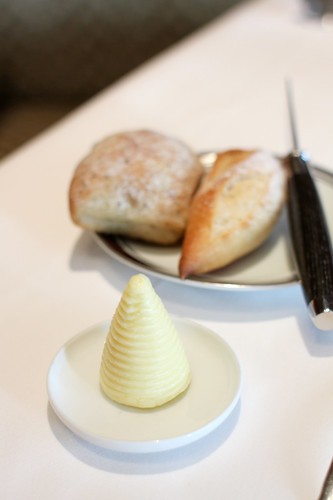
 Lastly, the beauty of the food that arrived on our table at Amber really took my breath away. The colors were so bright, the compositions so tight and neat, dainty but not precious--just such beautiful plates. Since we started our lunch too late to indulge in the dégustation menu, we ordered two different sets of the lunch menu and shared everything, resulting in 8 different courses total. Though unintentional, I think that ended up being the best way to order.
Lastly, the beauty of the food that arrived on our table at Amber really took my breath away. The colors were so bright, the compositions so tight and neat, dainty but not precious--just such beautiful plates. Since we started our lunch too late to indulge in the dégustation menu, we ordered two different sets of the lunch menu and shared everything, resulting in 8 different courses total. Though unintentional, I think that ended up being the best way to order.And now, the food:
amuse bouches: Amber's signature beetroot and foie gras lollipop
not pictured: pork croquette, crab spring roll
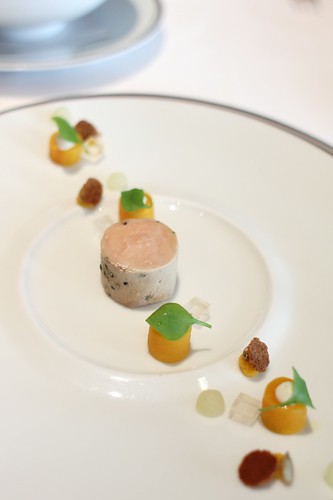
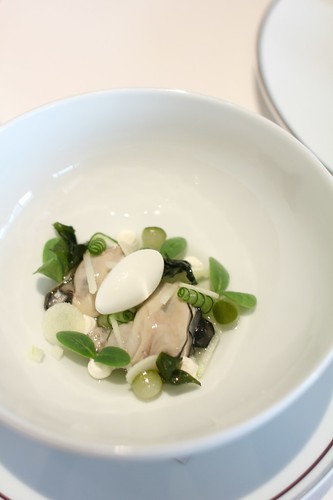
left: duck foie gras 'ballotine', pink lady apples with verjus, purée of kobacha pumpkin, crispy ginger bread
right: royal oyster no.1 served over pickled kyuri cucumber jell-O, greek 'hung' yogurt, fresh green apple sorbet
Our appetizer courses came in sets of two, for a total of four dishes, each one as delicious as the last. We started with the oyster dish, a dish that was perhaps more visually stunning than anything else. The different shades of green really excited me, and I took more pictures of this dish than I care to admit. Flavor-wise it was a very clean and bright dish, with oysters that weren't aggressively briny. The cucumber jell-O and apple sorbet were appropriately subtle yet refreshing.
I've come to realize I love cold preparations of foie gras much more than their hot, seared counterparts, and this version was spot-on. Dense, and solidly creamy, it melted just a touch when smeared on the accompanying hot, buttery brioche. Too good.
right: tasmanian salmon belly, confit & served cold, with periwinkles, grey shrimp & dill as a 'vichyssoise'
The second set of appetizers started with a 63 degree poached egg served in a martini glass. This was expectedly rich and luxurious, with crunchy bits of buttery croutons and chicken skin. Delicious, but I'll be honest, while I was spooning this in my mouth, I was still thinking about the oyster dish.
I'm never too excited when I see salmon on a menu, so the fact that a salmon dish was my favorite course that day really came as a surprise. I realize salmon confit is nothing new, but maybe it was the cut of salmon, its accompaniments, or something, that made it unlike any salmon dish I've ever had. It was cold, with a texture that I can only describe as a cross between salmon sashimi and lightly poached salmon, but it was neither. The quenelle of caviar added little pops of saltiness as expected, but the tiny grey shrimp and periwinkles were such powerful bits of ocean-y sweetness, it was eye-opening.
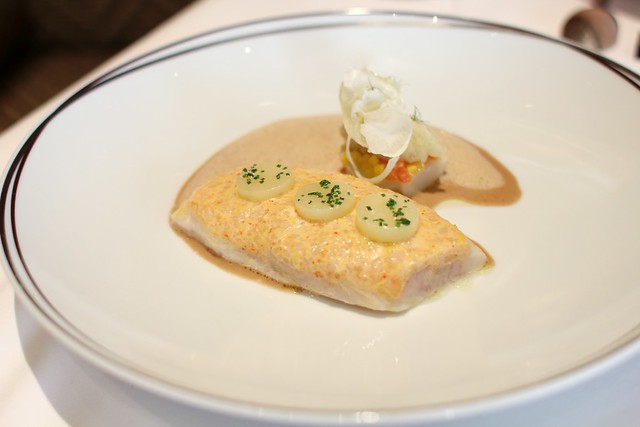
line caught john dory steamed with prawns and espelette pepper, heirloom carrots, braised fennel & prawn bisque
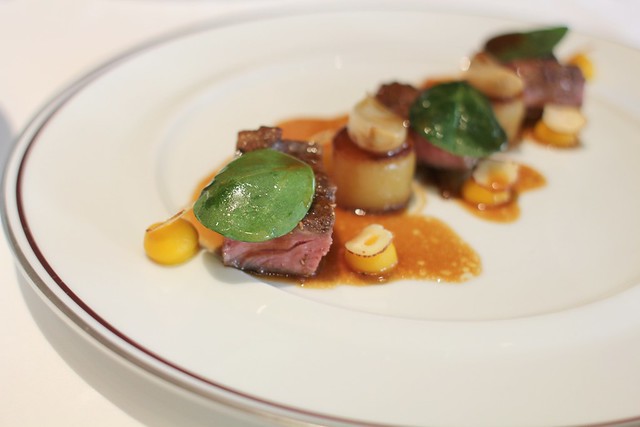
iberian pork 'pluma' dusted with 'quatre épices' then char grilled, kobacha pumpkin, fresh hazelnuts & vintage sherry vinaigrette
The main courses were just as impressive as the appetizers--not an easy feat. It's been a while since I'd had John Dory fish. Upon seeing it on the menu, I vaguely remember my dad saying it's one of his favorite fish to order at a restaurant. What I didn't remember, was the amazing texture of this fish--firm, dense and sweet, slightly translucent in color, and with each gentle nudge of a fork, large pieces would flake off. A layer of purée prawns was cooked on top of the filet, adding another dimension of sweet, snappy textures. Combined with the prawn/lobster bisque sauce, the whole dish tasted more crustacean than fish. The pork dish was also fantastic, the meat tasting more rich and flavorful than you'd imagine pork to be. However, my heart belonged to John Dory.
fresh unpasteurized cheese matured by bernard anthony
I can't remember the last time I saw such a beautiful cheese cart, and I may have made some embarrassing squeal-like noise when restaurant manager Sébastien Noyelle rolled it over. I made another excited expression/noise when he said "époisse" while naming all the cheeses, to which he made an psuedo-exasperated French face and asked, "why does everyone like époisse?" Really, I think the better question is, "who doesn't like époisse?" ;) I ended up with a plate of mimolette, morbier, camembert au calvados, epoisse, and some kind of blue cheese that made me more than happy--so happy that I barely needed the following desserts. We took the mignardises home in a beautiful "Amber" takeaway box that they must've designed for this specific situation. They survived the flight, and I enjoyed them the next day back home in Taipei while reminiscing about the meal.
tainori 64% chocolate, black tea 'délice' over a meyer lemon jell-O & milk sorbet
left: chestnut ice cream, brown rum marinated raisins & pastry 'diplomat' cream served as a deconstructed 'mille-feuille'
right: mignardises, salted caramels, calissons, pistachio macarons, caramel cream puff, candied chestnut, chocolate tart
right: mignardises, salted caramels, calissons, pistachio macarons, caramel cream puff, candied chestnut, chocolate tart
I realize that at the beginning of this post, I said I wouldn't write much, but I couldn't help it. I just remembered why I used to love blogging so much. It gives me a chance to relive a meal, and this meal was too good for me not to relive to its fullest, wordy, extent.




